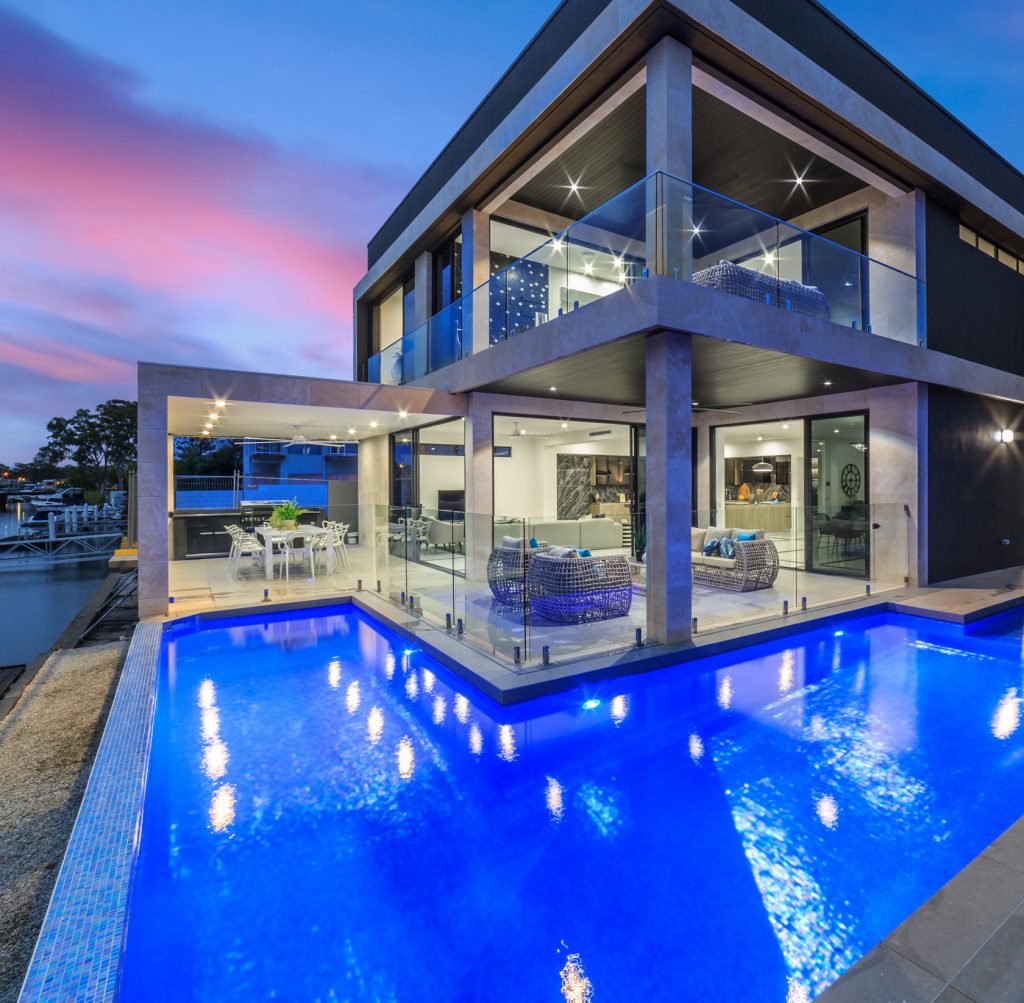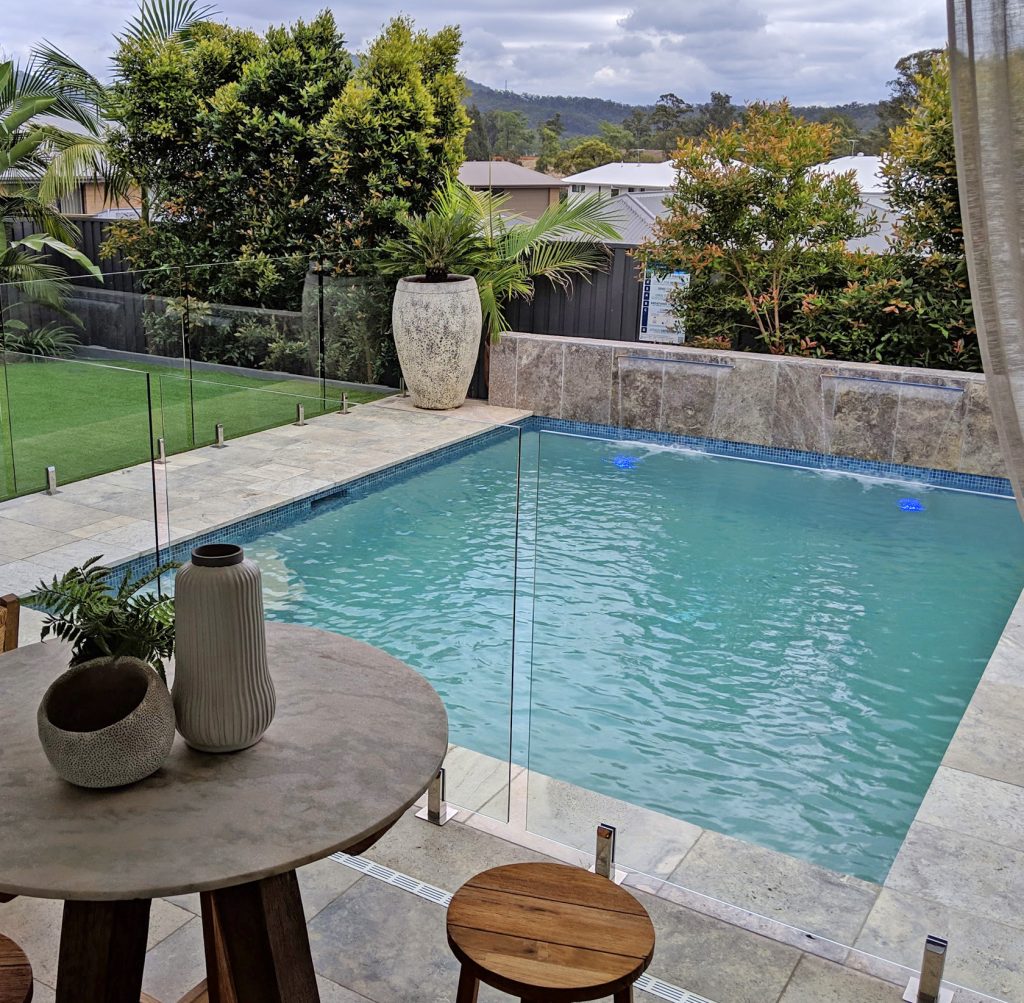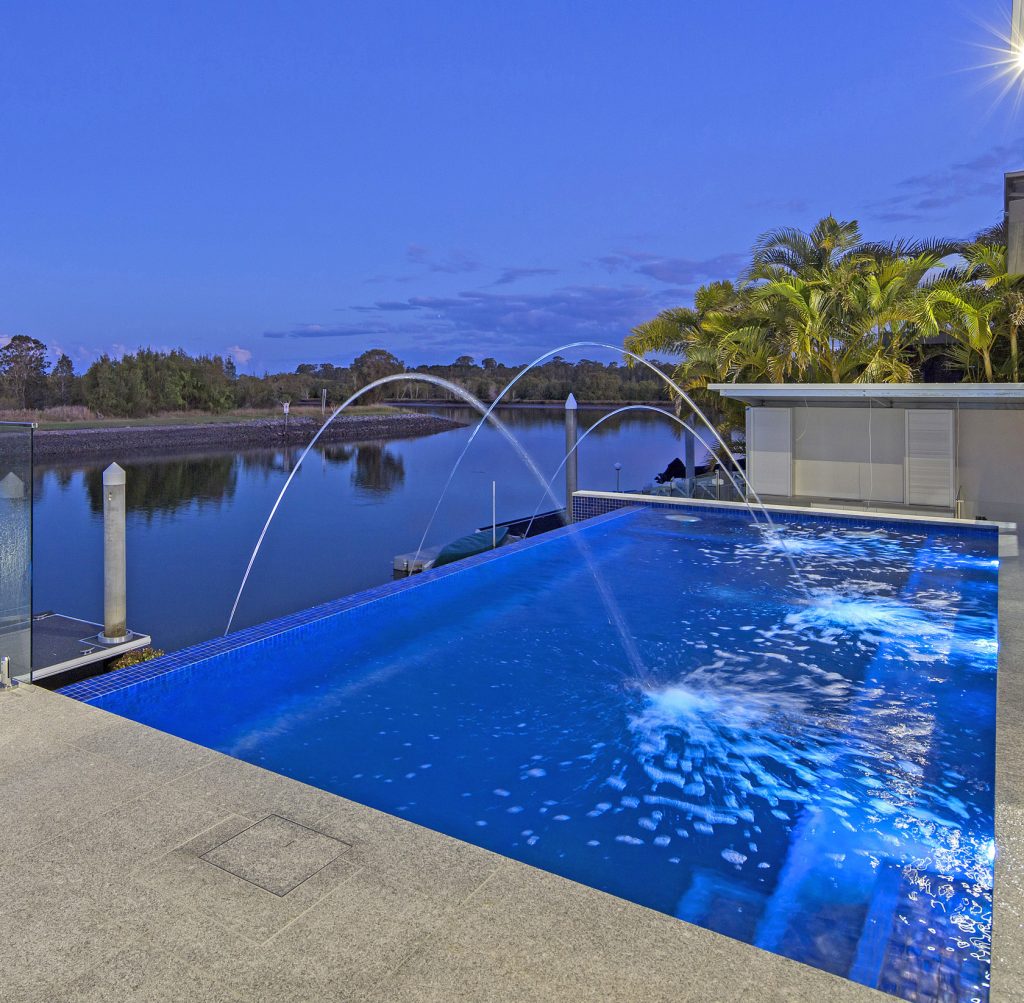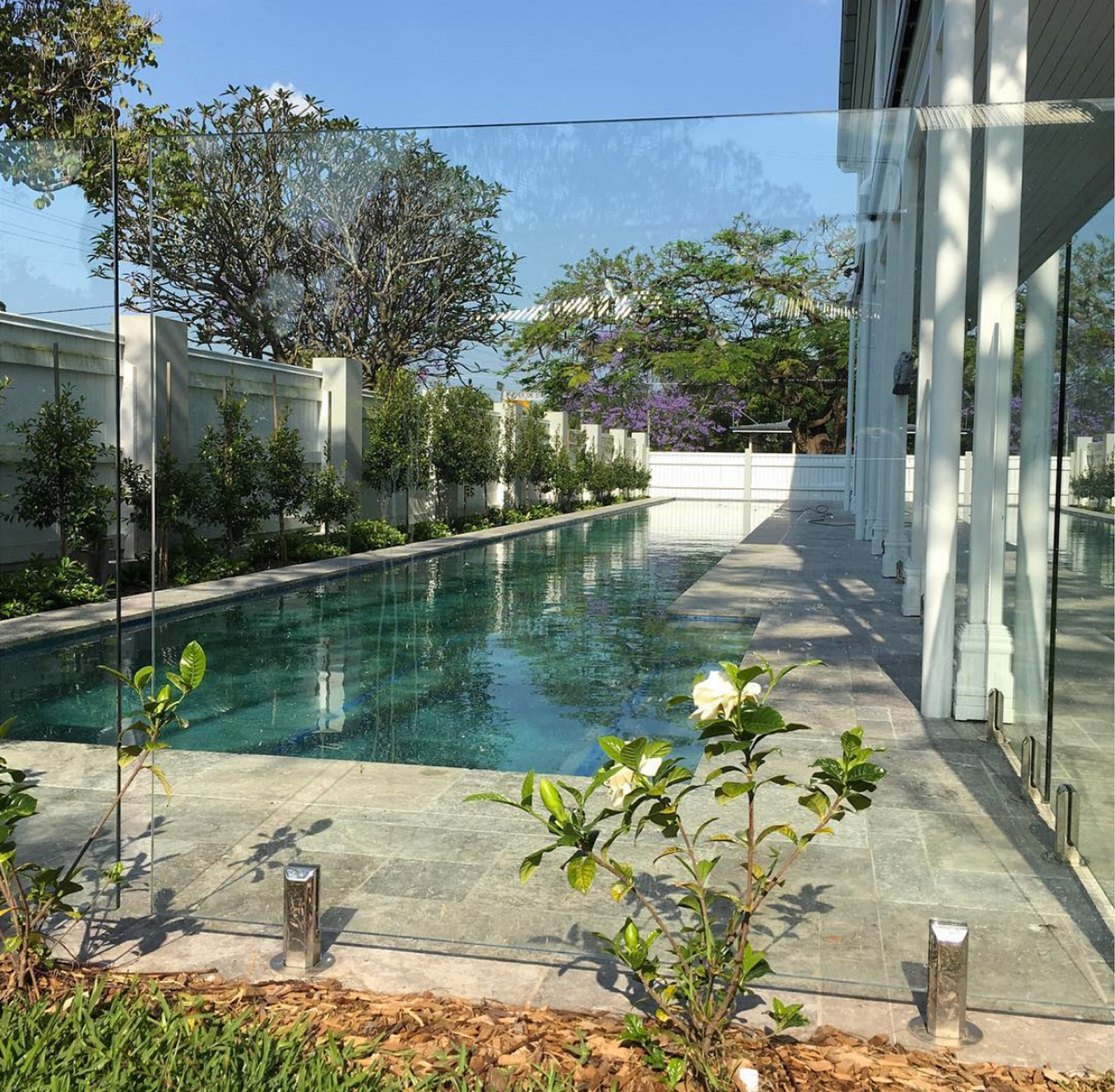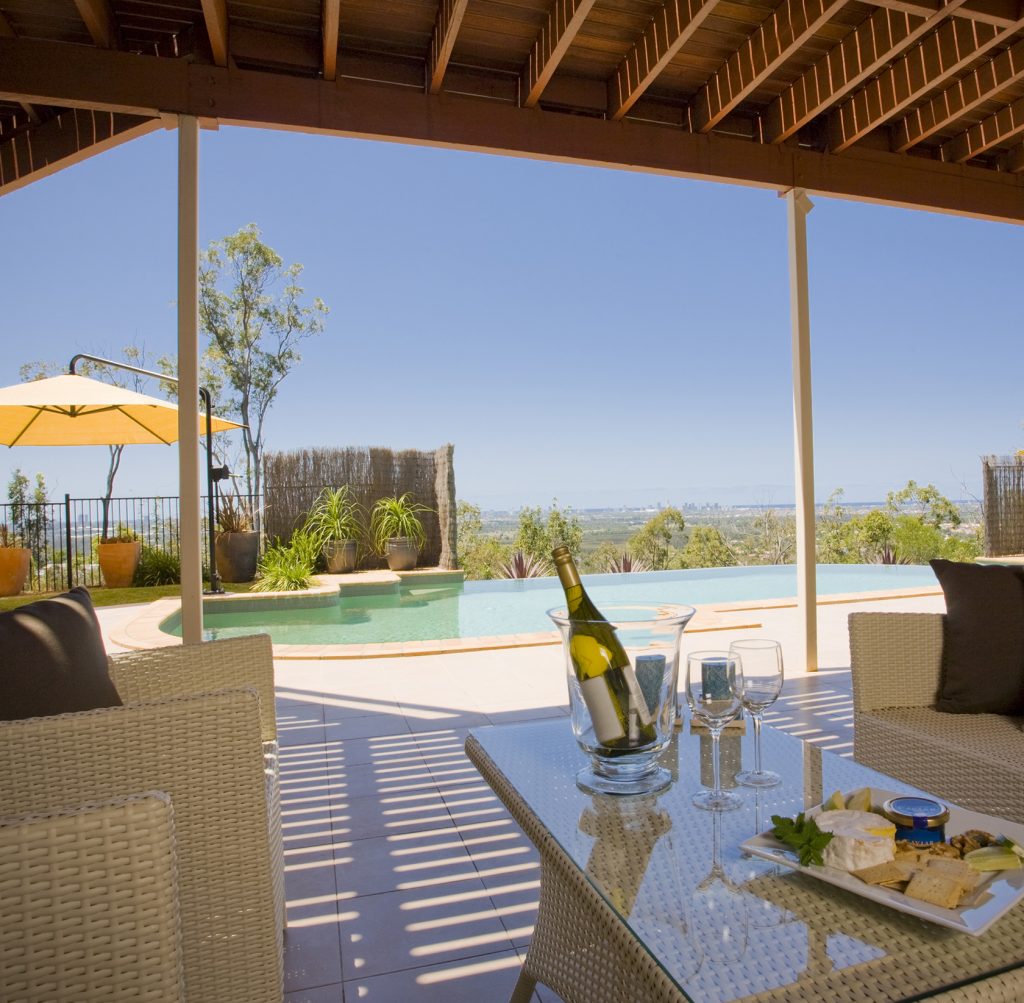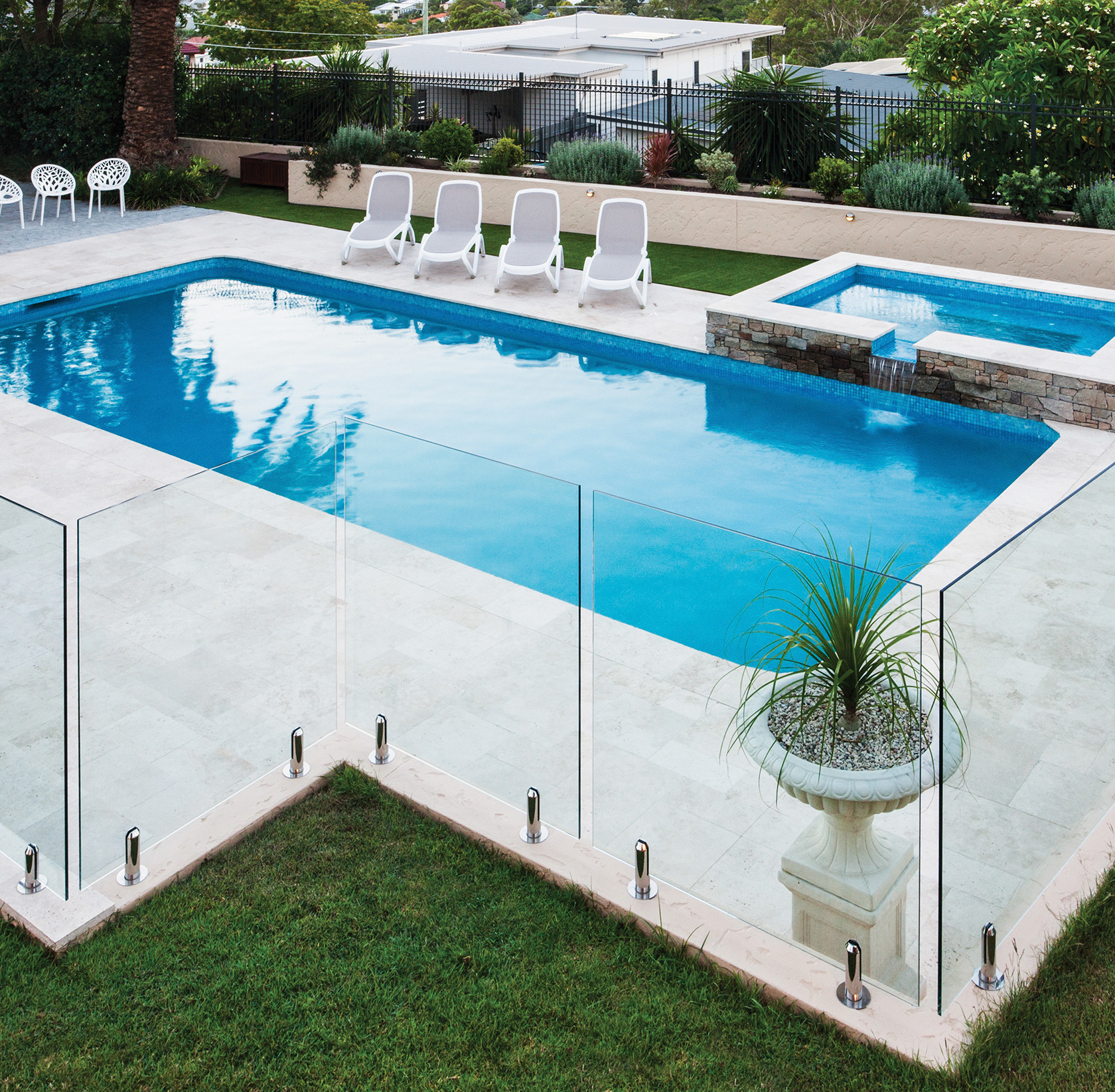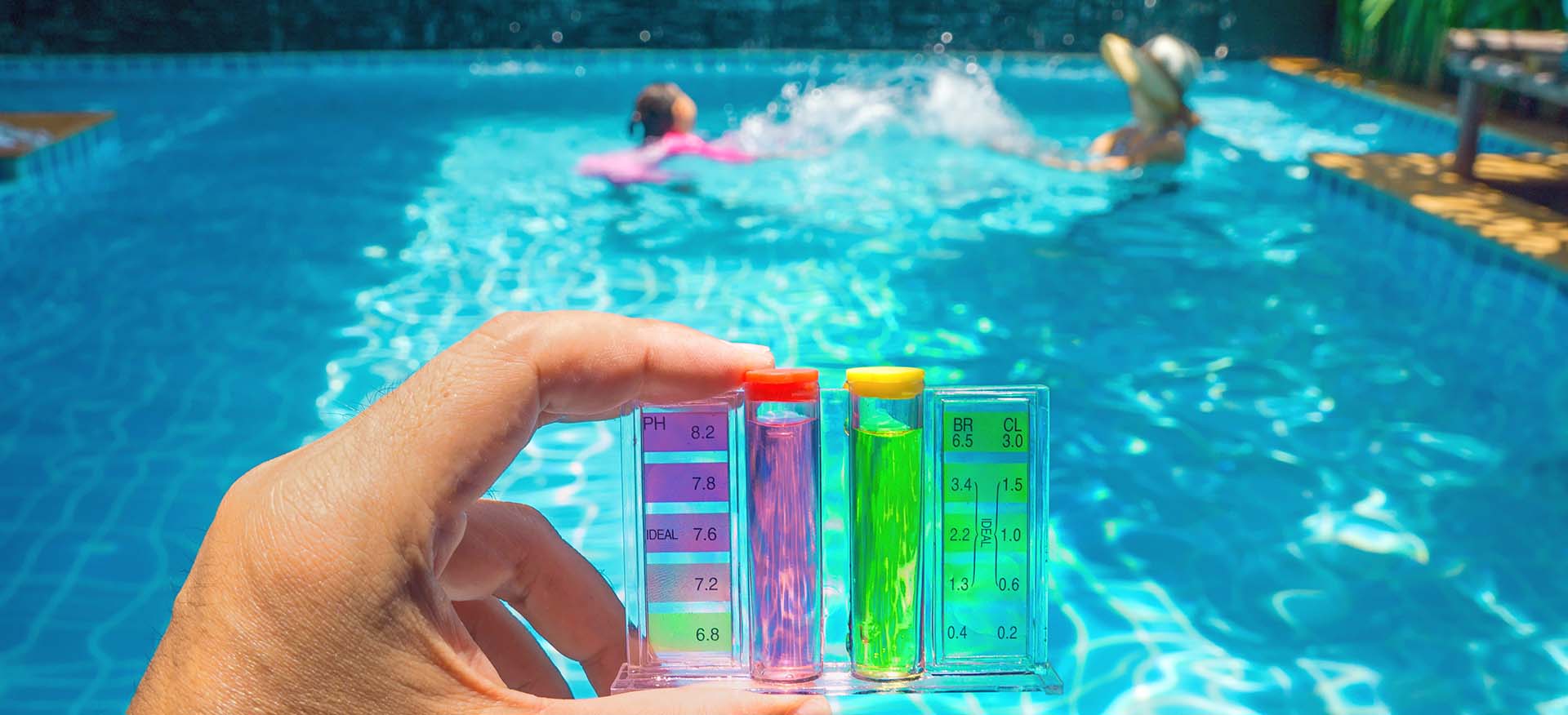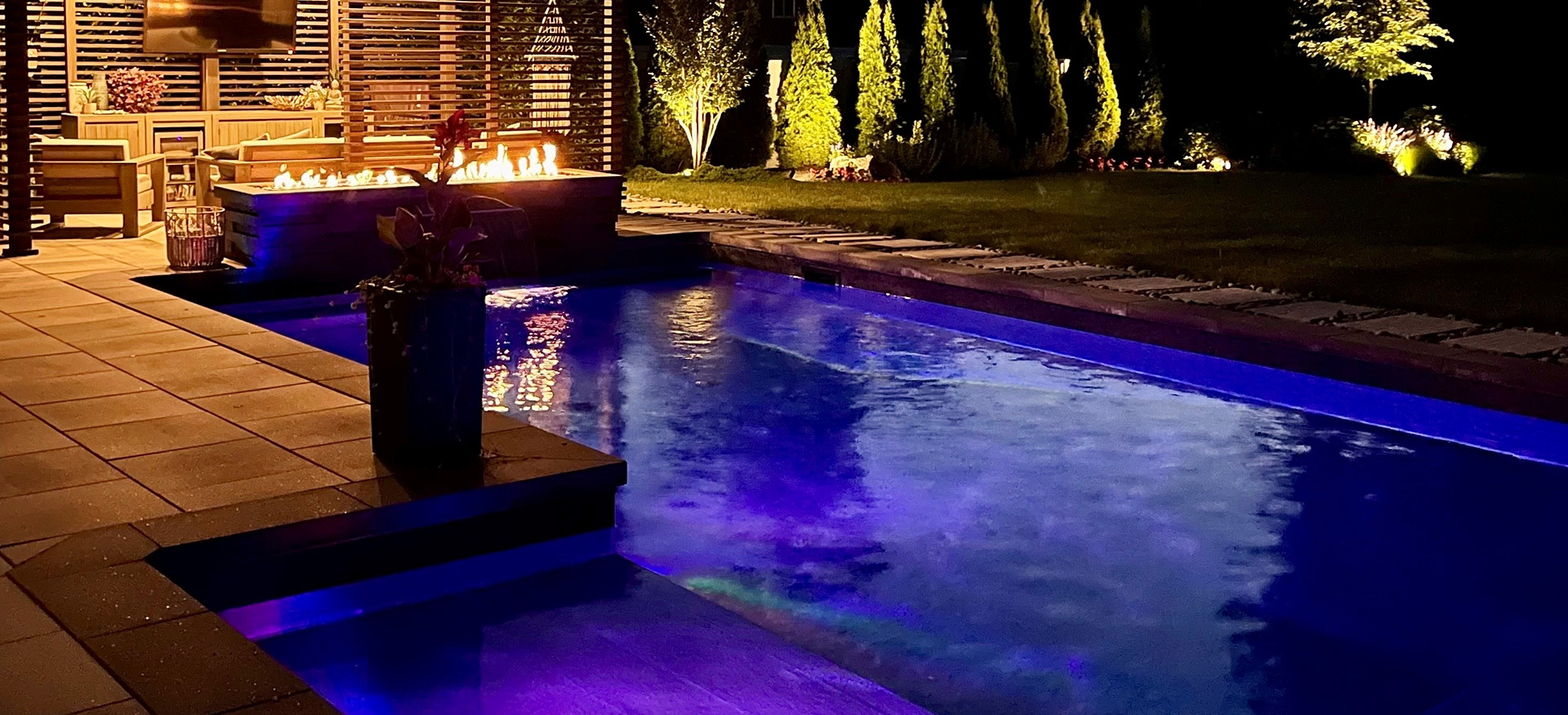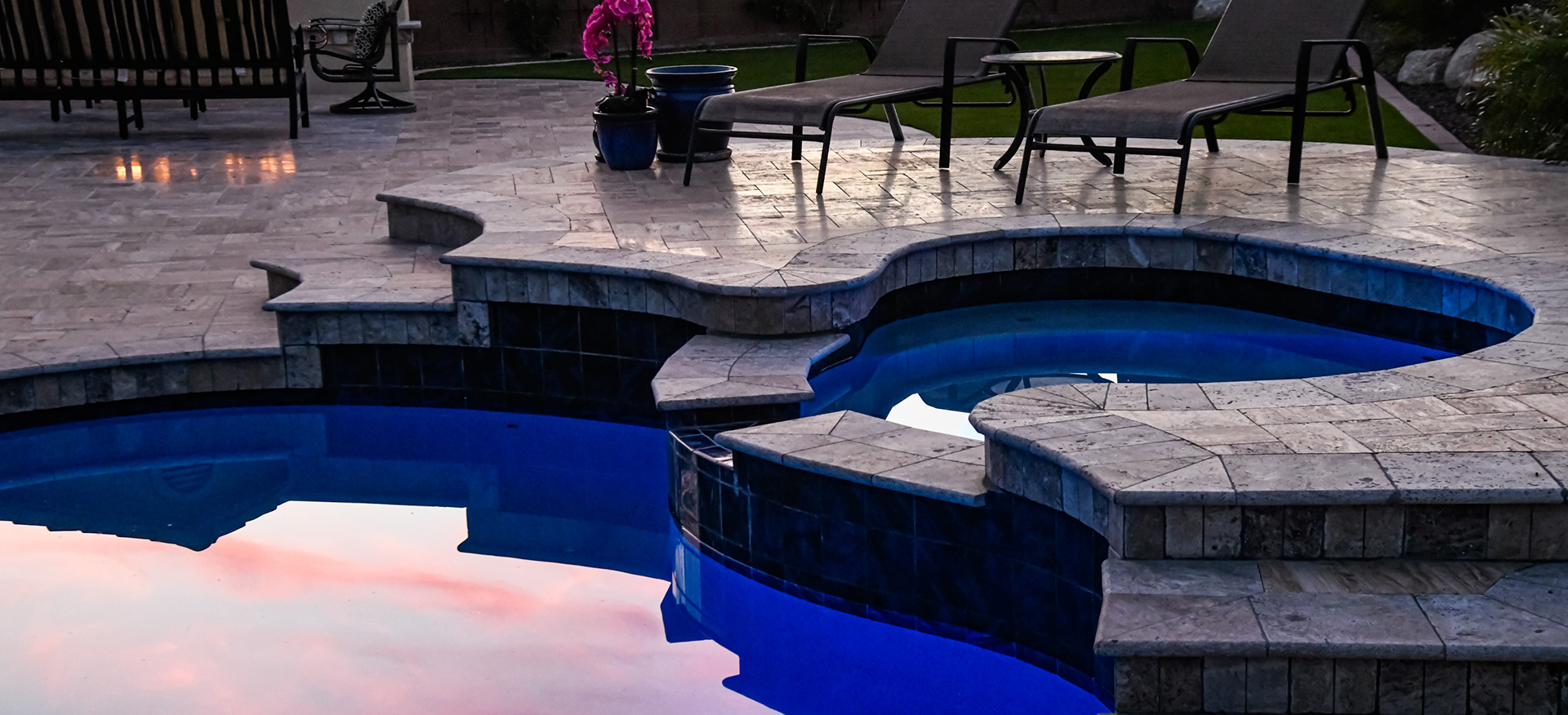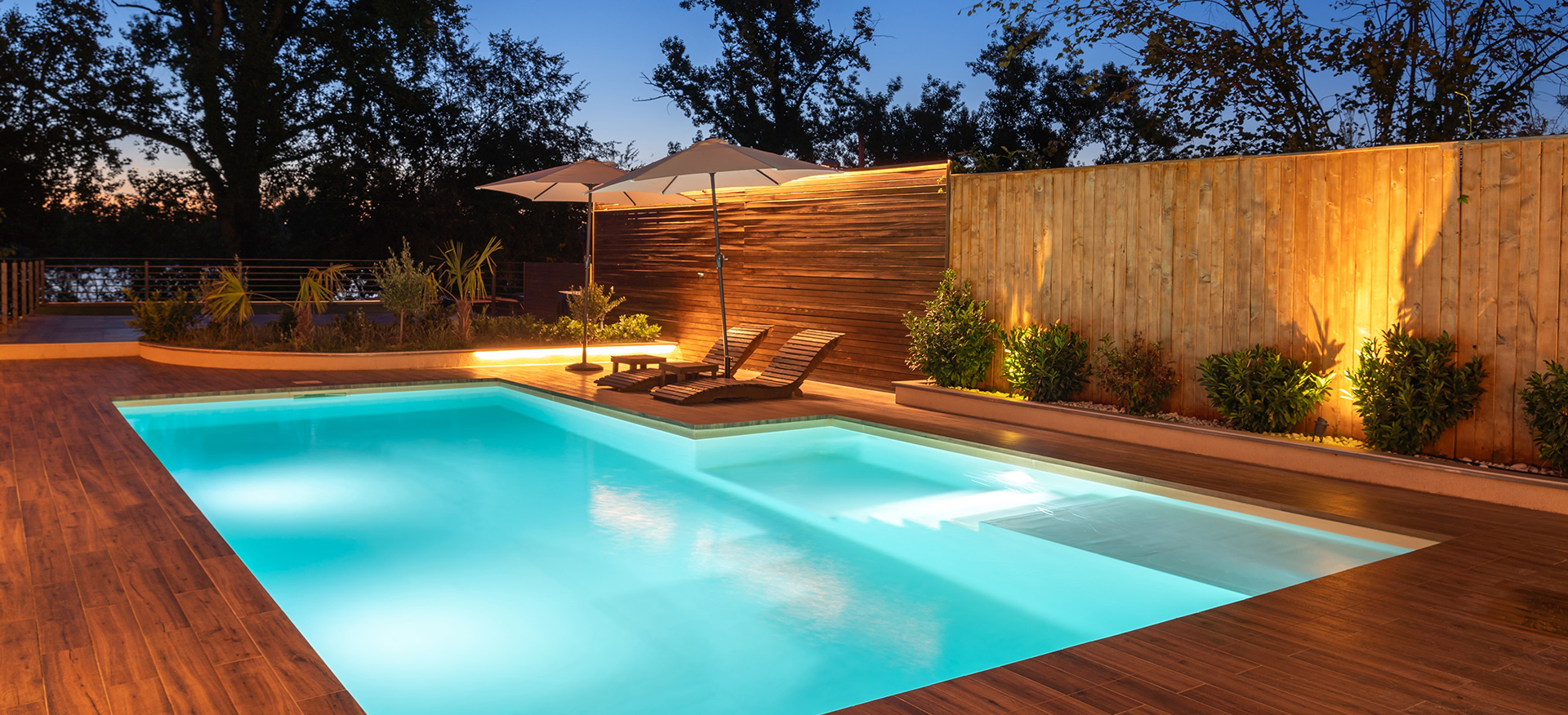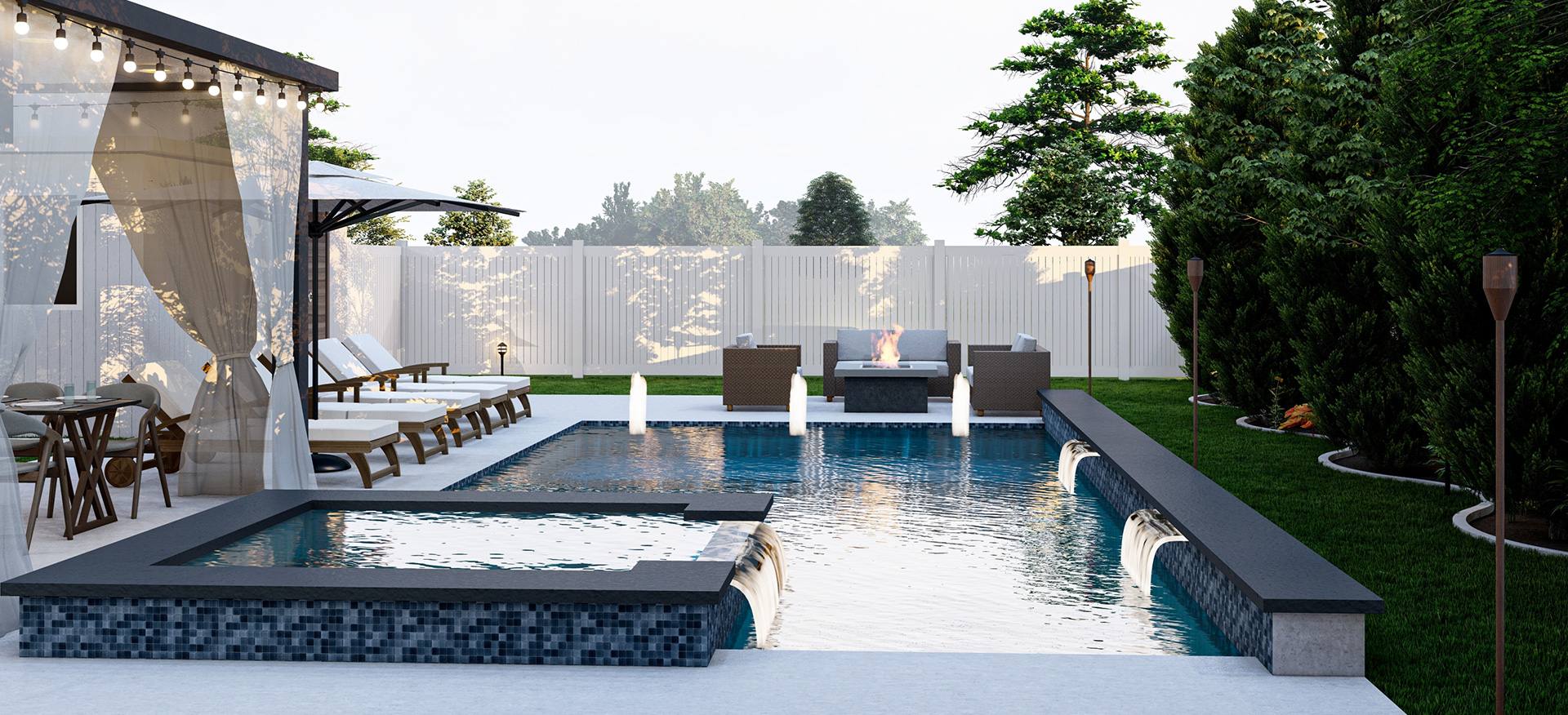It’s easy enough to capture a dose of pool water to test the levels, however it can be overwhelming when it comes to understanding the list of chemicals required to maintain healthy swimming levels.
We’ve put together a snapshot of the most common chemicals backyard pools need on the Gold Coast in order to boost the health of your pool water.
Remember to always follow the directions supplied whenever you use chemicals. They should also be stored in a dry area, away from children, animals and heat.
Chlorine
Chlorine is available in liquid, powder and tablet formats and is the ultimate water sanitiser. If you have a salt water chlorinator your pool will produce chlorine every time the pump turns on (putting salt high on your list of pool ingredients).
Chlorine will actively disinfect your pool water and effectively destroy viruses, bacteria and protozoans as well as skin cells.
Stabiliser
Stabiliser is also known as Cyanuric Acid and helps protect your chlorine from sunshine and UV rays. Without it you will need to boost your chlorine input on hot and sunny days. When adding stabiliser to your pool it is important to find the right balance – not enough and it won’t be effective, too much and it can reduce the effectiveness of your chlorine.
Shock
Shock is primarily used in the rescue of green pools. Small doses of shock can also be used to burn of bad & smelly chloramines. Shock (trichlors) and stabilised chlorines (dichlors) should never be used on a regular basis. Water should always be tested by a pool shop before doing shock treatments.
PH Balancers
When testing your pool water you are aiming for a balance of 7.2pH – 7.6pH, depending on your pool surface – anything below this means your water is acidic and anything above means your water is alkaline. A pH balancer will help achieve the ideal balance.
Buffer – Increases Alkalinity
Soda Ash – Increases pH
Hydrochloric Acid – Reduces pH
Calcium Chloride
Hardness raiser increases calcium levels and stops water from drawing calcium from the plaster and leaving white calcium deposits on the walls which are extremely hard to remove once they take hold.
Algaecide
Algaecide acts as a preventative barrier against algae. Once you have used shock or chlorine to kill algae you can use this product to help prevent it returning, algaecide can also act as a layer of protection to hold the pool during periods of low chlorine.
Clarifier
Clarifier helps particles in the water join together before being trapped in the filter. If your pool is cloudy it helps to bring water clarity back by removing floating debris.
Flocculant
Flocculant groups and binds particles together before making them sink to the bottom of your pool. Cartridge filters should always be removed and sand filter put on recirculate when adding flocculants. After circulating, pumps should be turned off for 1-2 days to allow particles to settle before vacuuming to waste.
Questions?
If you have any questions or need expert advice please contact one of our friendly team members on 07 5573 7677 or visit us at Helensvale Plaza – Sir John Overall Dr, Helensvale.
Low on time?
We offer a mobile pool cleaning and maintenance service. Review our packages and book online here.

